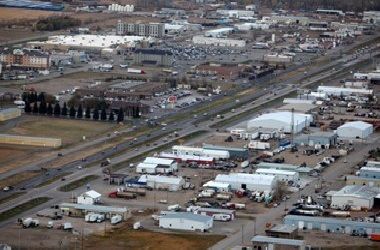The CMBS market is feeling the pain of new regulation that risks dramatically reducing the funding available to finance commercial property.
The market is billions of dollars short of the capital needed to underpin its US$100bn annual business, with no sign that investors are keen to jump in any-time soon.
The restrictions, coming into effect in December, prevent buyers of the riskiest so-called B-pieces of CMBS bonds from reselling or repackaging them for at least the first five years. That has sounded the alarm for specialist B-piece buyers, who have stacked up hefty returns in recent years – roughly 15% – by swiftly selling off the bulk of their positions.
Such buyers typically raise money in investor funds, often from institutions with tax exemptions, but that pool is drying up before the new regulatory regime begins on December 24.
“What we need is an industrialised B-piece solution,” said Rick Jones, an attorney at law firm Dechert, who has been advising banks and B-piece buyers on the new regulations. “But I don’t think we are going to get it.”
Risk-takers
B-piece buyers are the cornerstone of the CMBS market, not least because they absorb the risky pieces of deals that shoulder the first losses when loans go sour. On top of their handsome returns, these buyers also play a crucial role in weeding out the worst loans from collateral pools put together to underpin CMBS bonds.
In addition, buyers of the B-pieces – typically the worst-rated and lowest 5% tranches of a CMBS deal – often also appoint themselves as special servicers on the loans in question. In the event of a default, this means they get an extra monthly fee until the problems are worked out.
Extra fees are also charged at a loan’s resolution. In the case of the US$3bn CMBS default on the Peter Cooper Village Stuyvesant Town complex in New York, the servicer is looking to collect some US$600m.
But with the new restrictions on what B-piece buyers can do with their holdings, they are finding it harder to get investors to buy into new commercial property securitisations. Perhaps not surprisingly, a multi-year risk in an illiquid position in the commercial real estate market is proving to be a tough sell.
“No one wants to be stuck holding the bag when the music stops,” one senior executive at a B-piece buyer, who has yet to start raising money for a new fund, told IFR.
Moreover, while CMBS investors suffered more than US$22bn in losses from defaulted deals sold in the boom-boom years of 2006 and 2007, the loan quality in new deals may be even worse today. Moody’s last week reported that the loan leverage in conduit CMBS deals hit a new peak of almost 119% in the fourth quarter of last year – above the pre-crash high of 117.5%.
Not having funds
A CMBS supply of US$100bn a year – of which US$60bn is forecast to be conduit and US$40bn large, single-asset securitisations – the amount thought needed to satisfy the 5% of the conduit deals would mean around US$3bn in capital generated from B-piece buyers.
Of the small circle of active B-piece buyers, only LNR Partners is said to have made significant headway on its B-piece fund, raising what is understood to be US$125m so far.
Given the current conditions, some in the market believe the risk-reward ratio just is not good enough now to justify buying in.
While several funds looking to raise CMBS money are talking about 17%–17.5% returns on a non-loss adjusted basis, not everyone thinks those levels are realistic.
“It could be a twelve, but it could also be in the single digits,” one executive who has looked through the proposals of several B-piece investment firms told IFR.
And while the scramble for new cash intensifies, so do fears that the funding market is drying up – if not for good, then for quite a long time.
“We need to remember that we don’t need two or three deals covered,” said Jones at Dechert. “You need enough capital to make a US$100bn-a-year business.”
